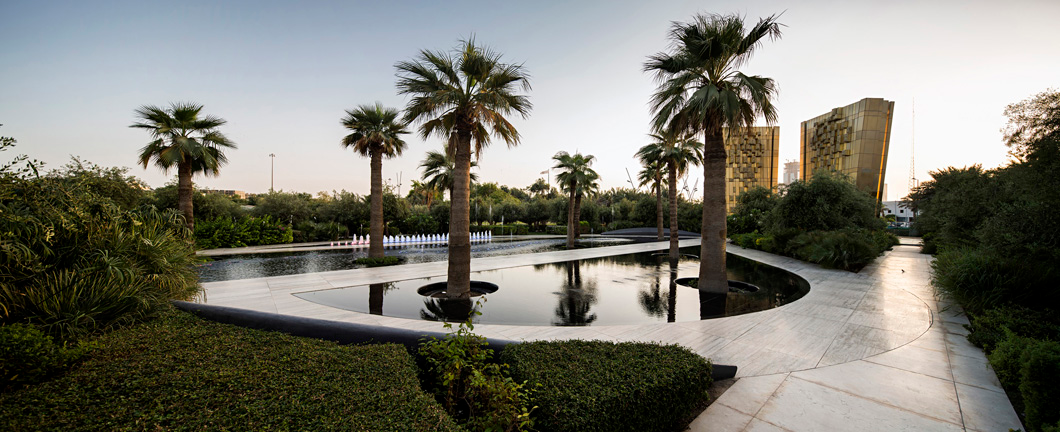

Types of trees that can thrive in Kuwait environment
Kuwait has a hot and arid desert climate, which can be challenging for growing many types of trees.
we have access to a selection of outdoor plants, trees, and shrubs that are suitable for this environment.
If you're interested in purchasing these plants, click here to place your order.
However, there are still some types of trees that can thrive in this environment. Here are a few examples:
Date palms: Date palms are the most common and popular type of tree in Kuwait. They are well adapted to the hot, dry climate and can provide delicious dates as well as shade.
Acacia trees: Acacia trees are hardy and drought-resistant, making them a good choice for Kuwait gardens. They also have attractive yellow flowers in the spring.
Tamarisk trees: Tamarisk trees are known for their feathery, blue-green foliage and their ability to thrive in salty, sandy soil. They are also drought-tolerant and can handle high temperatures.
Neem trees: Neem trees are native to India but can also grow well in Kuwait. They have many medicinal and cosmetic properties and can also provide shade.
Olive trees: Olive trees are hardy and drought-resistant, making them a good choice for Kuwait gardens. They also have attractive silver-green foliage and can produce olives.
Prosopis cineraria (Ghaf Tree): Native to the Arabian Peninsula, the Ghaf tree is well-adapted to desert environments and can withstand extreme heat and drought.
Ziziphus spina-christi (Christ's Thorn Jujube): Another native tree to the region, it's drought-resistant and can tolerate high temperatures.
Eucalyptus camaldulensis (River Red Gum): While not native to the region, certain species of eucalyptus, like the River Red Gum, can tolerate drought and grow in sandy soils.
Albizia lebbeck (Lebbeck Tree): Known for its rapid growth and ability to tolerate dry conditions, it can be a good choice for landscaping in Kuwait.
Citrus trees (such as lemon, lime, and orange): Some citrus varieties can tolerate the heat and dryness of Kuwait's climate if provided with sufficient irrigation.
Pistacia atlantica (Mt. Atlas mastic tree): Resilient to drought and heat, this tree can grow in sandy soils and is native to arid regions.
Moringa oleifera (Moringa Tree): Known for its nutritional benefits, the Moringa tree is drought-tolerant and can grow in sandy soils, making it suitable for Kuwait's environment.
Dalbergia sissoo (Indian Rosewood): Resilient to drought and heat, this tree can tolerate a wide range of soil types, including sandy soils.
Ficus religiosa (Sacred Fig): While it requires regular watering initially, the Sacred Fig is drought-tolerant once established and can grow in sandy soils.
Flame Tree (Delonix regia) - Despite being native to Madagascar, the Flame Tree is cultivated in various regions with warm climates, including Kuwait, for its striking red flowers and ornamental value.
Bottlebrush (Callistemon species) - These evergreen shrubs or small trees are cultivated for their colorful, bottlebrush-shaped flower spikes, and some species can tolerate the arid conditions of Kuwait.
Jacaranda (Jacaranda mimosifolia) - While not native to Kuwait, Jacaranda trees are sometimes planted for their beautiful purple flowers, though they may require additional irrigation to thrive in the arid climate.
Baobab (Adansonia species) - Known for their distinctive swollen trunk and drought tolerance, Baobab trees are occasionally planted in Kuwait as ornamentals.
Bauhinia (Bauhinia variegata) - Also known as Orchid Trees, these flowering trees are appreciated for their showy flowers and are sometimes planted in Kuwait for ornamental purposes.
Mesquite (Prosopis species) - Certain species of Mesquite trees, such as Prosopis juliflora, are drought-tolerant and can adapt to sandy soils, making them suitable for planting in Kuwait.
Royal Poinciana (Delonix regia) - Also known as the Flamboyant tree, this species is occasionally planted in Kuwait for its stunning red flowers and ornamental value.
African Mahogany (Khaya senegalensis) - Known for its durability and attractive wood, the African Mahogany is occasionally planted in Kuwait for its ornamental value and shade provision.
Queen Palm (Syagrus romanzoffiana) - This graceful palm species is often planted in Kuwait for its elegant appearance and ability to tolerate heat and drought.
Poinciana (Caesalpinia pulcherrima) - Also known as Pride of Barbados, this flowering shrub or small tree is appreciated for its showy red and yellow flowers and is commonly planted for ornamental purposes in Kuwait.
Weeping Willow (Salix babylonica) - Despite requiring ample water, Weeping Willows are sometimes planted in Kuwait for their graceful appearance and ability to provide shade near water features or in more watered areas.
Norfolk Pine (Araucaria heterophylla) - Despite its name, this tree is not a true pine. Norfolk Pine is often cultivated in Kuwait for its symmetrical shape and suitability as a potted plant or ornamental tree in gardens.
Mediterranean Cypress (Cupressus sempervirens) - Known for its tall, slender shape and dense foliage, the Mediterranean Cypress is occasionally planted in Kuwait for its ornamental value and as a windbreak.
Silk Oak (Grevillea robusta) - This evergreen tree, native to Australia, is occasionally planted in Kuwait for its attractive foliage and showy orange flowers.
Cape Chestnut (Calodendrum capense) - Despite being native to South Africa, this tree is sometimes cultivated in Kuwait for its ornamental value and fragrant, pink flowers.
Australian Willow (Geijera parviflora) - Despite its name, this tree is not a true willow. Australian Willow is appreciated for its drought tolerance and attractive weeping habit, making it suitable for planting in Kuwait.
Pomegranate (Punica granatum) - Appreciated for its ornamental value as well as its edible fruit, the Pomegranate tree is sometimes planted in Kuwait for its attractive flowers and cultural significance.
Natal Plum (Carissa macrocarpa) - This evergreen shrub or small tree is sometimes cultivated in Kuwait for its glossy foliage, fragrant flowers, and edible fruit, as well as its ability to tolerate drought and heat.
Baobab (Adansonia digitata) - Although native to Africa, Baobab trees are sometimes planted in Kuwait for their unique appearance and cultural significance, although they may require special care to thrive in the arid climate.
Yucca (Yucca species) - These evergreen plants with sword-shaped leaves and tall flower spikes can add a desert aesthetic to gardens in Kuwait while requiring minimal water once established.
